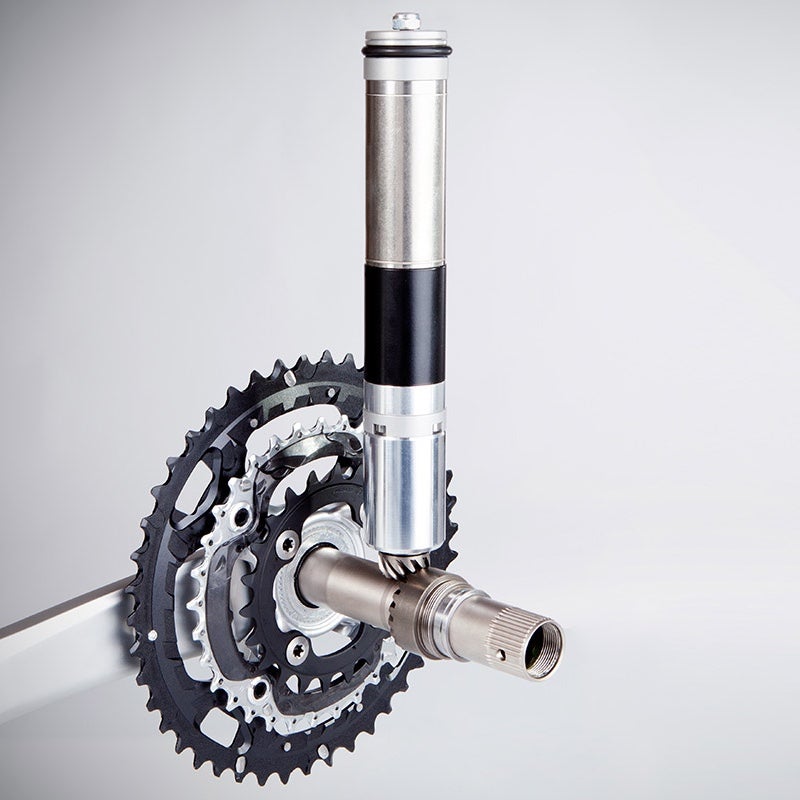Femke Van den Driessche, a budding cyclocross star and race favorite, made news this weekend when race officials at the world championships in Zolder, Belgium, discovered a concealed inside the frame of her back-up race bike. For her part, the 19-year-old Belgian claims that the bike wasn’t hers (that it belonged to a “friend”). For its part, competitive cycling’s governing body (the UCI), isn’t buying it for a second.
Many of the facts are still foggy: What type of motor was hidden inside that team bike? How many people were involved in the ruse? How big of a problem is this really?
One thing, however, is clear—after years of experts dismissing the specter of it entirely, “mechanical doping” has infiltrated professional cycling.
The Rumor that Wouldn’t Die
In 2010, cycling star Fabian Cancellara found himself besieged by rumors that his ability to motor away from rivals during the spring classics that year was the result of his having a motor tucked somewhere in his bike. Italian journalist Michele Bufalino posted online that showed Cancellara dropping other pros during that year’s Paris Roubaix after seeming to fiddle with something on his handlebars. While race commissaires inspected Cancellara’s bike and gave it a clean bill of health, the rumors never died, as evidenced by the four million views Bufalino’s video racked up on Youtube.
Motorgate roared back to life in 2014 when another surfaced, this time showing Ryder Hesjedal’s bike spinning around on the asphalt after a crash at the Vuelta a Espana. Hesjedal’s bike was later inspected and also deemed clean, though that assertion hasn’t stopped the video from developing its own cult following.
Greg LeMond: Mechanical Doping Is a Problem
Cycling experts have always recognized that motors could be hidden in a bicycle frame, but have generally dismissed it as nothing more than a crutch for aging weekend warriors revisiting their glory years at the local Gran Fondo. There has been one notable exception: three-time Tour de France winner, Greg LeMond.
LeMond, who also insisted that the peloton was rife with doping at a time when no one wanted to hear that particular story, has been similarly vocal about “mechanical doping.” “I believe it’s been used sometimes in the Grand Tours,” LeMond told the Associated Press in France in 2014. Never one to mince words, LeMond went on to call out the UCI’s efforts to root about for motors as “fluff” and “all words.”
So How Deep Does the Cheating Go?
What are the odds that Femke Van den Driessche really knew nothing about the motor inside her spare bike? I put the question to Joe Parkin, the only man to have represented the United States in the pro road, cyclocross, and mountain bike world championships.
“Well, she is really young,” says Parkin “so she might not be as particular about her bike setup as someone who has been on the ProTour for 10 years, but I have a hard time believing that she wouldn’t have jumped on each of her bikes the day of the world champs. I rode Elite Worlds one time, was not a favorite, and still made sure I at least took a cursory parking-lot spin on my spare bike.”
Author Mike Ferrentino, who served as one of America’s team mechanics during the `99 cyclocross world championships, is similarly skeptical. “It’s not entirely impossible, but it still smells like bullshit. It has been a long time since my days in the pits, but back then it was expected that you knew your stuff. If you were a team mechanic, you probably built those bikes, or at the very least knew them inside and out….The idea that the bike just somehow ended up migrating from “entourage” into the team, and happened to look and fit exactly like her regular bike, and nobody noticed anything out of the ordinary, it just seems to pile several layers of implausibility onto the story.”
Here’s the Thing: Anyone Can Buy These Motors
The UCI hasn’t revealed details about the motor found in Van den Driessche’s bike, but it’s likely similar to the Vivax-Assist—a four-pound that fits within most round seat tubes. The motor features a beveled gear that connects directly to a bike’s bottom bracket spindle. You can stow the battery inside your water bottle and discretely tuck the “on” button within your handlebar tape.
The Vivax pumps an additional 100 watts of power into your pedaling efforts. In other words, the motor won’t do all the work for you, but it will enable slower riders to handily drop better racers at clutch moments in a race. Vivax insists its product is not intended for outright cheating—it just so happens that you can equip your bike with that motor—with no one else the wiser.
So What’s the UCI Doing?
The UCI caught plenty of flak for its slipshod handling of doping scandals both before and during the Lance Armstrong years. You can’t, however, argue that the UCI is asleep at the wheel this time around. Though he’s received no shortage of heckling for his efforts, UCI President Brian Cookson has made a point the past few years of having his racing officials conduct random checks for “technical cheating” during major professional competitions.
In fact, the UCI’s technical manager Mark Barfield recently announced in an interview with Cyclingtips.com that the UCI would be using magnetic resistance-enabled devices to scan bikes at the (then) upcoming cyclocross world championships. And sure enough, race commissaires were combing the pits, doing precisely that.
The UCI bungled the EPO era because it waited too long to halt the spread of performance-enhancing drugs. If cycling’s watchdogs stay on course this time around, they might just stop this new style of cheating before it truly gets rolling.


